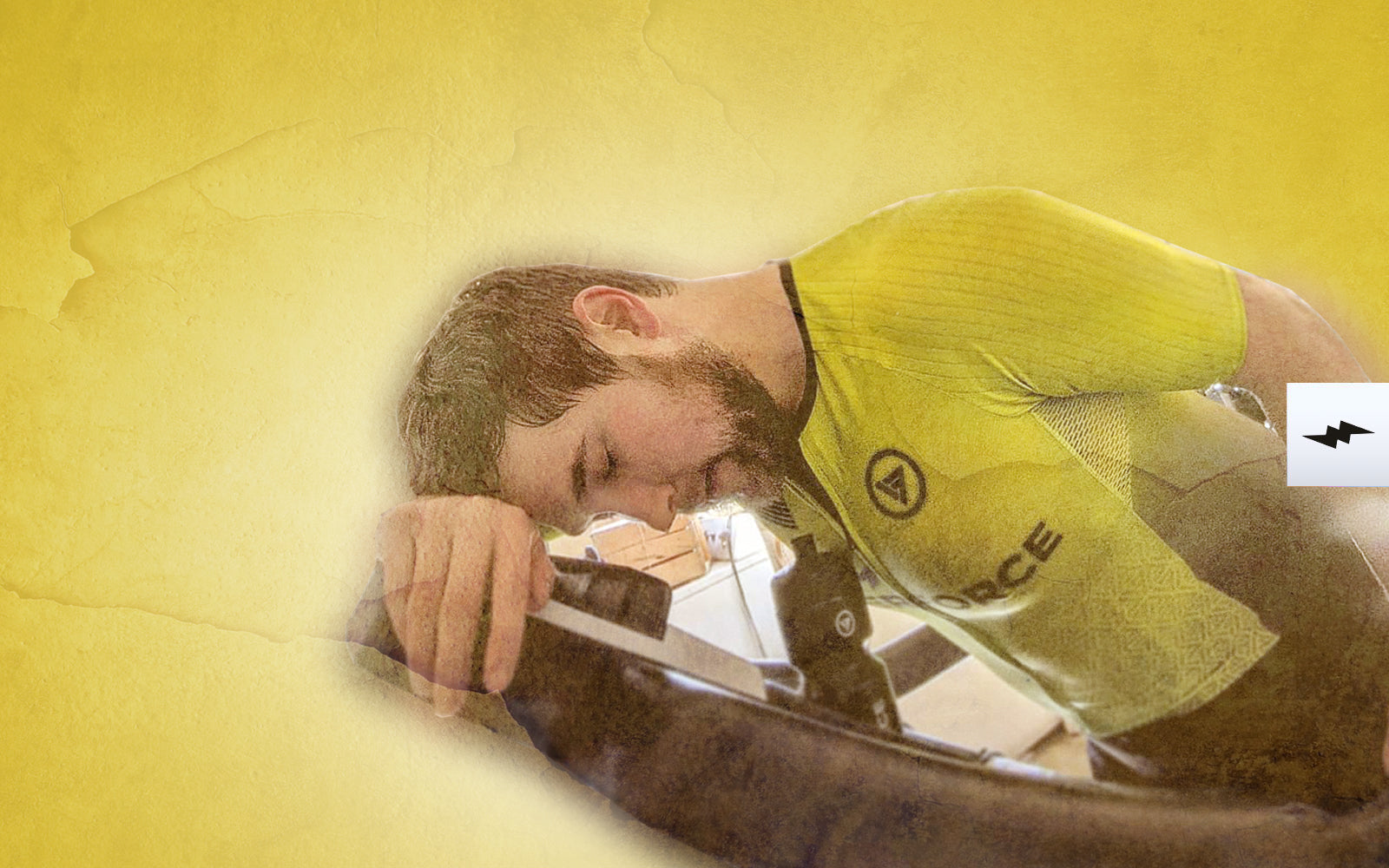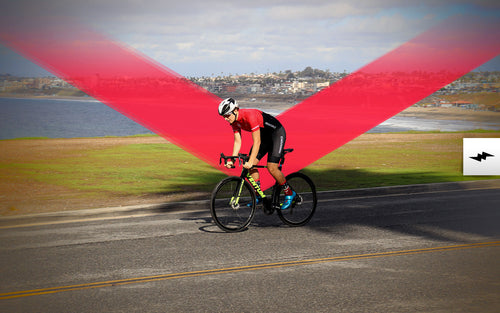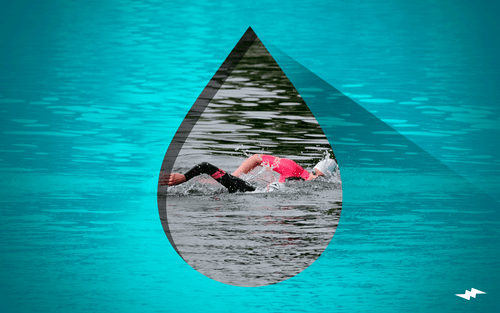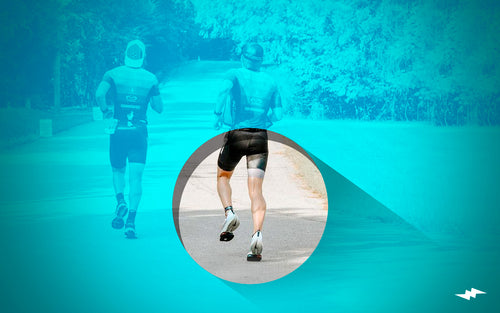How To Adapt Your Training When Things Go Wrong

It is pretty easy nowadays to find the perfect training plan online for whatever event you have coming up. The difficulty is that life is not perfect so, more often than not, that plan has to be adapted. We’re going to take a look at some common problems that can scupper your ‘perfect’ training plan, and how to deal with them.
The most common issues that trip up our training programs are injury, sickness or simply that your life-schedule simply gets overloaded. Instead of seeing these as obstacles to smash through, try to see them as signals that it is time to adapt your training.
Injury Has Side-lined Me!
Injuries are the worst. Your mind is desperate to get out there training, but your body will not allow it. Most of us have suffered this at some point, and probably come back far too soon because we feel like we are missing out and getting weaker.
The thing is, this is the ideal opportunity to focus on the things that we always say we ‘don’t have time for’, but we know we should be doing.
Flexibility Work – For most endurance athletes we enjoy putting ourselves through long, arduous training session. Sitting on the floor of our living room, gently stretching doesn’t quite feel like work, but this is exactly the type of thing you should be doing to protect yourself from further injuries. You have a groin strain? Fine, do some work on ankle flexibility, or on your shoulders – it is highly unlikely that your injury will totally stop you from working on this.
Meditation – We did a whole article on how meditation can help you become a better athlete, but the reality is that many of us will see an hour running as more beneficial than an hour sitting on the floor ‘visualising’. However, if the option of hitting the road is taken from your hands, then give it a go!
I Am Sick!
We all get sick from time to time, it happens; we are not machines. However, think back to the last time you were laid up in bed and what actually led to it? Most likely lack of sleep, over-training, poor diet, stress, or a combination of these. Keep an eye on these areas in particular and try to make changes before you fall ill. That said, if and when you are too sick to train here are some activities that can keep you sane.
Look Back At Your Successes – As athletes, we are very forward-focused, but let us not forget our past achievements. Grab your old competition photos and run through the events in your mind, from the start to that glorious moment of crossing the finish line. Pat yourself on the back and remind yourself that you are pretty awesome! Those positive feelings are only going to help you recover faster too.
Look Forward To The Coming Season – Take the time out of training to list down the events that you want to join for the coming year. Maybe you want to branch out into other disciplines; marathon swims, off-road triathlons, trail running? Now is the time to search out new opportunities. Failing that, why not spend some time looking for new gear? Everyone loves new toys, so give yourself an endorphin hit by treating yourself to some new equipment that will arrive just in time for your recovery?
Life Is Getting In The Way
Whether it’s work commitments that keep you back at the office, or unforeseen family events, life sometimes throws unexpected challenges at you that will affect your training. We wrote extensively on how to balance work and training, but the overall take home is that we need to be flexible.
Create A ‘Bag Of Tricks’ – Trying to work against the challenges that life throws at you is futile. Instead, make a list of exercises that you can dip into whenever an unexpected commitment comes up. This way you won’t feel like you are ‘missing out’ on a planned training session, but rather that you get the opportunity to dip into your rarely used activities. Keep them short, and focus them to your overall goals:
- 15-minute core workout
- 10 minutes on the balance board (throwing a tennis ball at the wall for extra skill)
- 10 -minute visualisation session of your next race/big training day
- 15 minutes stretching for hip flexors, hamstrings and glutes
The options are endless, but the point is that if you are flexible with your training then your perception is altered in that rather than having a training session taken away, you have the chance to do something that you wouldn’t normally do.
Final Thoughts
Being able to adapt is a key skill that we need if we are going to be able to train at our best and also hold down all the other roles that we have in life, be that as an employee, a mother, a son or a partner. If we accept that now, and make a plan for when our training is affected, by injury, sickness, or life in general, then we can be more relaxed when it does happen.
Written for Innerforce by Stewart Spiessens.
Photos. @ryans.journey.back

It is pretty easy nowadays to find the perfect training plan online for whatever event you have coming up. The difficulty is that life is not perfect so, more often than not, that plan has to be adapted. We’re going to take a look at some common problems that can scupper your ‘perfect’ training plan, and how to deal with them.
The most common issues that trip up our training programs are injury, sickness or simply that your life-schedule simply gets overloaded. Instead of seeing these as obstacles to smash through, try to see them as signals that it is time to adapt your training.
Injury Has Side-lined Me!
Injuries are the worst. Your mind is desperate to get out there training, but your body will not allow it. Most of us have suffered this at some point, and probably come back far too soon because we feel like we are missing out and getting weaker.
The thing is, this is the ideal opportunity to focus on the things that we always say we ‘don’t have time for’, but we know we should be doing.
Flexibility Work – For most endurance athletes we enjoy putting ourselves through long, arduous training session. Sitting on the floor of our living room, gently stretching doesn’t quite feel like work, but this is exactly the type of thing you should be doing to protect yourself from further injuries. You have a groin strain? Fine, do some work on ankle flexibility, or on your shoulders – it is highly unlikely that your injury will totally stop you from working on this.
Meditation – We did a whole article on how meditation can help you become a better athlete, but the reality is that many of us will see an hour running as more beneficial than an hour sitting on the floor ‘visualising’. However, if the option of hitting the road is taken from your hands, then give it a go!
I Am Sick!
We all get sick from time to time, it happens; we are not machines. However, think back to the last time you were laid up in bed and what actually led to it? Most likely lack of sleep, over-training, poor diet, stress, or a combination of these. Keep an eye on these areas in particular and try to make changes before you fall ill. That said, if and when you are too sick to train here are some activities that can keep you sane.
Look Back At Your Successes – As athletes, we are very forward-focused, but let us not forget our past achievements. Grab your old competition photos and run through the events in your mind, from the start to that glorious moment of crossing the finish line. Pat yourself on the back and remind yourself that you are pretty awesome! Those positive feelings are only going to help you recover faster too.
Look Forward To The Coming Season – Take the time out of training to list down the events that you want to join for the coming year. Maybe you want to branch out into other disciplines; marathon swims, off-road triathlons, trail running? Now is the time to search out new opportunities. Failing that, why not spend some time looking for new gear? Everyone loves new toys, so give yourself an endorphin hit by treating yourself to some new equipment that will arrive just in time for your recovery?
Life Is Getting In The Way
Whether it’s work commitments that keep you back at the office, or unforeseen family events, life sometimes throws unexpected challenges at you that will affect your training. We wrote extensively on how to balance work and training, but the overall take home is that we need to be flexible.
Create A ‘Bag Of Tricks’ – Trying to work against the challenges that life throws at you is futile. Instead, make a list of exercises that you can dip into whenever an unexpected commitment comes up. This way you won’t feel like you are ‘missing out’ on a planned training session, but rather that you get the opportunity to dip into your rarely used activities. Keep them short, and focus them to your overall goals:
- 15-minute core workout
- 10 minutes on the balance board (throwing a tennis ball at the wall for extra skill)
- 10 -minute visualisation session of your next race/big training day
- 15 minutes stretching for hip flexors, hamstrings and glutes
The options are endless, but the point is that if you are flexible with your training then your perception is altered in that rather than having a training session taken away, you have the chance to do something that you wouldn’t normally do.
Final Thoughts
Being able to adapt is a key skill that we need if we are going to be able to train at our best and also hold down all the other roles that we have in life, be that as an employee, a mother, a son or a partner. If we accept that now, and make a plan for when our training is affected, by injury, sickness, or life in general, then we can be more relaxed when it does happen.
Written for Innerforce by Stewart Spiessens.
Photos. @ryans.journey.back
SEE WHAT CUSTOM APPAREL LOOKS LIKE

GEAR UP
MORE FROM THE BLOG

Solo Training; What You Gain By Training Alone
The virtues of training as a group are constantly touted by triathletes. The social aspect, being able to push each...

5 Tips for Regaining Motivation For Triathlon Training
Triathletes are often seen as superhuman fitness freaks who are willing to brave the cold and wet to go out...

Common Freestyle mistakes and how to fix them
There is no hiding poor technique when it comes to the swim leg of a triathlon. It can mean the...

Is It OK To Heel Strike When Running
We all have our own unique way of running; from the way we hold our hands and arms all the...



